Psyllium Husk Powder Substitute in Baking: 5 Alternatives That Actually Work
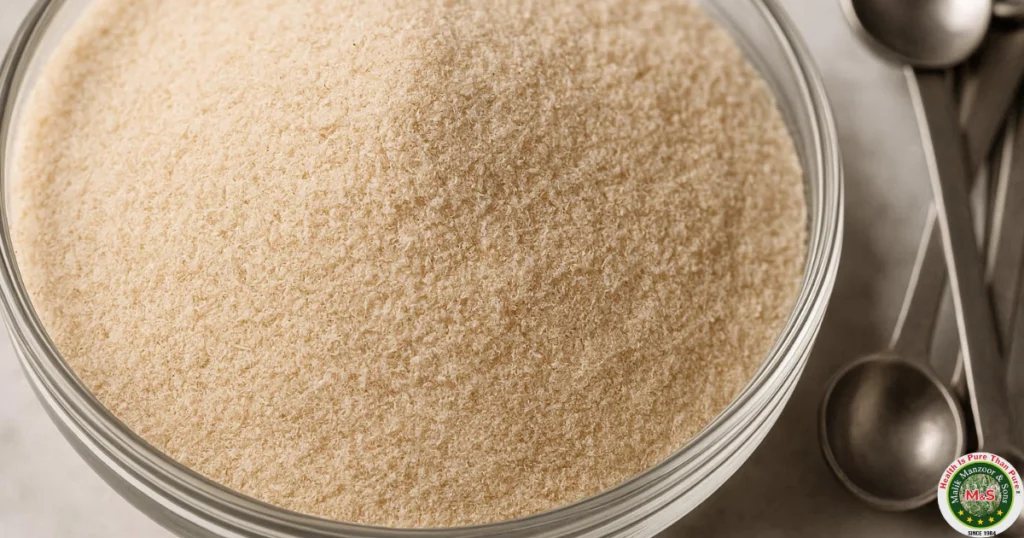
Running out of psyllium husk powder mid-recipe can feel frustrating, especially when you’re following a specific gluten-free or low-carb baking formula. Whether you’re dealing with dietary restrictions, ingredient availability, or simply exploring new baking options, finding the right psyllium husk powder substitute in baking doesn’t have to be complicated. This comprehensive guide walks you through proven alternatives that deliver similar binding, moisture-retention, and texture-enhancing properties without compromising your final results.
What Is Psyllium Husk Powder and Why Do Bakers Use It?
Psyllium husk powder comes from the seeds of Plantago ovata, a plant cultivated primarily in India and Pakistan. When mixed with liquids, this fine powder creates a gel-like substance that mimics gluten’s binding properties, making it invaluable for gluten-free baking. Bakers incorporate it into bread, muffins, pizza crusts, and tortillas because it improves texture, prevents crumbling, and adds moisture retention that keeps baked goods fresh longer.
The Psyllium Husk Powder Substitute in Baking works by absorbing water – up to ten times its weight – creating elasticity in dough and preventing the dry, crumbly texture common in gluten-free baking. It also contributes to the rise and structure of baked products without adding significant flavor, allowing other ingredients to shine through naturally.
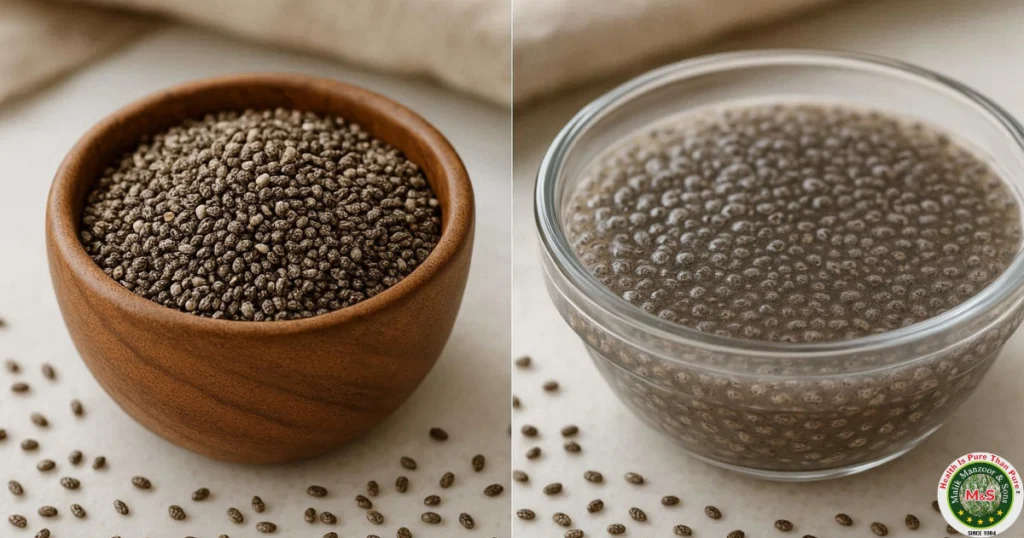
Why You Might Need a Psyllium Husk Powder Substitute in Baking
Several practical reasons drive bakers to seek Psyllium Husk Powder Substitute in Baking:
Availability Issues:
Not all grocery stores stock psyllium husk powder regularly, particularly in smaller towns or international locations where specialty health ingredients aren’t readily accessible.
Cost Considerations:
High-quality psyllium products can be expensive compared to more common baking ingredients, prompting budget-conscious bakers to explore economical alternatives.
Digestive Sensitivities:
Some individuals experience bloating or digestive discomfort when consuming psyllium, despite its general reputation as a digestive aid.
Flavor Preferences:
While generally neutral, psyllium can impart a slight earthy taste that doesn’t suit every recipe or palate.
Experimentation:
Adventurous bakers often test different binders to discover unique textures and results in their creations.
Top 5 Psyllium Husk Powder Substitute for Baking.
1. Xanthan Gum: The Commercial Baker’s Choice
Xanthan gum stands as the most popular psyllium husk powder substitute in baking across commercial and home kitchens. This fermented corn sugar creates strong binding properties that hold gluten-free baked goods together effectively.
Conversion Ratio:
Use 1 teaspoon xanthan gum for every 2 tablespoons psyllium husk powder
Best For:
Breads, pizza dough, cookies, cakes
Pros:
- Requires smaller quantities than psyllium
- Neutral flavor profile
- Long shelf life
- Readily available in most stores
- Works well in cold preparations
Cons:
- Can create gummy texture if overused
- More expensive per use
- Some people experience digestive issues
- Not suitable for those avoiding corn products
Xanthan gum works by creating a web-like structure throughout your dough or batter. Start with smaller amounts and gradually increase if needed, as too much creates an unpleasant, slimy mouthfeel.
2. Ground Flaxseed: The Nutritional Powerhouse
Ground flaxseed meal offers nutritional benefits alongside binding properties, making it an excellent psyllium husk powder substitute in baking for health-conscious cooks. Rich in omega-3 fatty acids and fiber, flaxseed adds a mild, nutty flavor that complements many recipes.
Conversion Ratio:
Use 2 tablespoons ground flaxseed plus 3 tablespoons water for every 1 tablespoon psyllium husk powder
Best For:
Muffins, pancakes, quick breads, brownies
Pros:
- Adds nutritional value
- Budget-friendly.
- Pleasant nutty flavor.
- Easy to grind at home from whole seeds.
- Egg substitute properties.
Cons:
- Darker color affects appearance.
- Shorter shelf life (refrigeration recommended).
- Distinct flavor not suitable for delicate recipes.
- Can create denser texture.
For optimal results, create a “flax egg” by mixing ground flaxseed with water and letting it sit for five minutes until gel-like. This activated mixture integrates more smoothly into batters and doughs, and this makes it one of makes best Psyllium Husk Powder Substitute in Baking.
3. Chia Seeds: The Ancient Grain Alternative.
Chia seeds function similarly to flaxseed when ground, creating mucilage that binds ingredients together. These tiny seeds pack impressive nutritional benefits including protein, fiber, and antioxidants.,
Conversion Ratio:
Use 1.5 tablespoons ground chia seeds plus 3 tablespoons water for every 1 tablespoon psyllium husk powder.
Best For:
Energy bars, crackers, flatbreads, puddings.
Pros:
- Exceptional nutritional profile.
- Creates excellent gel consistency.
- Mild flavor.
- Works well in both sweet and savory recipes.
- Long shelf life.
Cons:
- Visible seeds create speckled appearance.
- Slightly crunchy texture unless finely ground.
- More expensive than flaxseed.
- Can absorb too much moisture if not measured carefully.
Grind chia seeds in a coffee grinder for smoother integration, though some bakers appreciate the visual texture whole seeds provide in rustic breads and crackers
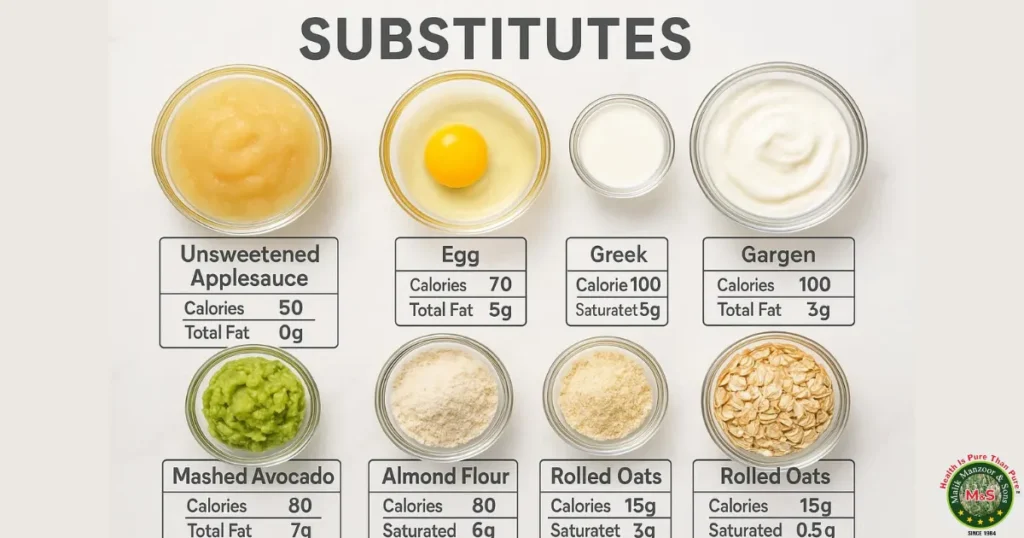
4. Guar Gum: The Underrated Performer.
Guar gum comes from guar beans and functions as a thickening and binding agent in gluten-free baking. Less common than xanthan gum, it performs exceptionally well in cold applications and frozen products. One of the best Psyllium Husk Powder Substitute in Baking.
Conversion Ratio:
Use 1 teaspoon guar gum for every 2 tablespoons psyllium husk powder.
Best For:
Ice cream, frozen desserts, cold doughs, sauces.
Pros:
- Effective in cold temperatures.
- Helps prevent ice crystal formation.
- Budget-friendly compared to xanthan gum.
- Neutral taste.
- Works well in dairy-based recipes.
Cons:
- Can cause digestive discomfort.
- Less readily available.
- Creates different texture than psyllium.
- Not heat-stable in all applications.
Guar gum requires thorough mixing to prevent clumping. Always blend it with dry ingredients before adding liquids for even distribution throughout your recipe.
5. Unflavored Gelatin: The Protein-Based Binder.
Unflavored gelatin provides binding and structure through protein rather than fiber. While not suitable for vegetarians or vegans, it excels in specific baking applications where elastic texture matters most.
Conversion Ratio:
Use 1 tablespoon unflavored gelatin powder dissolved in 3 tablespoons warm water for every 1 tablespoon psyllium husk powder.
Best For:
Marshmallows, gummies, cheesecakes, mousses.
Pros:
- Creates excellent structure.
- Widely available.
- Adds protein content.
- Smooth texture.
- Heat-activated for controlled binding.
Cons:
- Not plant-based.
- Requires heating for activation.
- Distinctive texture not ideal for all recipes.
- Religious dietary restrictions may apply.
Bloom gelatin properly by sprinkling it over cold water first, then heating gently until dissolved. Never boil gelatin, as excessive heat breaks down its binding properties. One of the top bakers choices for Psyllium Husk Powder Substitute in Baking.
Comparison Table: Psyllium Husk Powder Substitute in Baking.
| Substitute | Conversion Ratio | Best Use | Dietary Note | Cost Level |
| Xanthan Gum | 1 tsp per 2 tbsp | Breads, doughs | Vegan, GF | High |
| Ground Flaxseed | 2 tbsp + water per 1 tbsp | Muffins, quick breads | Vegan, GF | Low |
| Chia Seeds | 1.5 tbsp + water per 1 tbsp | Energy bars, crackers | Vegan, GF | Medium |
| Guar Gum | 1 tsp per 2 tbsp | Frozen desserts | Vegan, GF | Medium |
| Gelatin | 1 tbsp + water per 1 tbsp | Cheesecakes, mousses | Not vegan | Low |
How to Successfully Substitute in Different Baking Applications.
Gluten-Free Bread Making.
Bread requires substantial structure and elasticity that psyllium typically provides. When substituting, combine approaches for best results: use xanthan gum for structure (1.5 teaspoons per cup of flour) plus ground flaxseed for moisture retention (2 tablespoons per loaf).
Allow your dough to rest after mixing, giving alternative binders time to hydrate fully. This resting period – typically 15-20 minutes – allows ingredients to absorb moisture and develop the necessary elasticity for proper rise.
Pizza Crust and Flatbreads.
Pizza dough benefits from psyllium’s ability to create pliable, stretchy texture. Replace with equal parts xanthan gum and ground flaxseed for similar results. The xanthan provides stretchiness while flaxseed adds pliability and prevents excessive cracking.
Roll your dough between parchment paper sheets to prevent sticking and achieve even thickness without adding excess flour that might dry out your crust.
Muffins and Quick Breads.
Quick breads are more forgiving than yeast breads when substituting binding agents. Ground flaxseed or chia seeds work exceptionally well here, contributing moisture and structure without demanding precise measurements. These substitutes also add nutritional benefits that complement the comfort-food nature of muffins and quick breads.
Mix wet and dry ingredients separately before combining, and avoid overmixing once combined to prevent tough, dense results.
Cookies and Brownies.
Most cookie and brownie recipes function well without psyllium or its substitutes unless specifically formulated for gluten-free baking. If your recipe calls for psyllium, try ground flaxseed first as it integrates smoothly and adds pleasant nutty undertones that complement chocolate and nuts.
Chill cookie dough containing substitutes for 30 minutes before baking to improve texture and prevent excessive spreading.
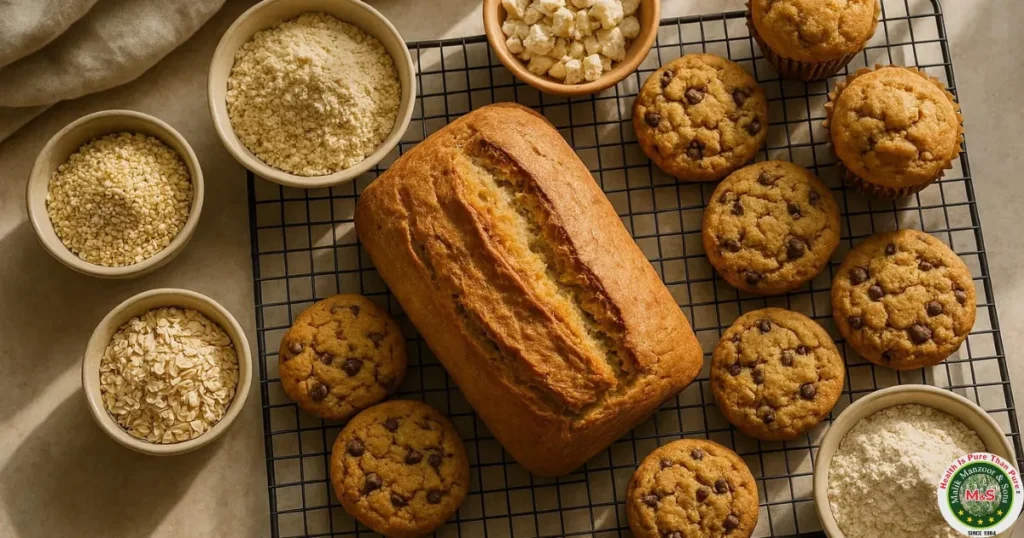
Expert Tips for Perfect Substitution Results.
Hydration Timing Matters:
All psyllium husk powder substitute in Baking need adequate time to absorb moisture. Mix your dough or batter, then let it rest for 10-15 minutes before shaping or baking. This patience pays off in improved texture and easier handling.
Temperature Considerations:
Some substitutes perform differently at various temperatures. Xanthan and guar gum maintain stability across temperature ranges, while gelatin requires warmth for activation and flaxseed works best at room temperature.
Combine Substitutes Strategically:
Don’t hesitate to use multiple substitutes in one recipe. Combining half xanthan gum with half ground flaxseed often produces superior results compared to relying on a single alternative.
Adjust Liquid Ratios:
Substitutes absorb moisture differently than psyllium. Start with slightly less liquid than your recipe suggests, adding more gradually until reaching desired consistency. Dough should feel tacky but not sticky.
Consider Recipe pH:
Acidic ingredients like lemon juice or vinegar can affect how binding agents perform. Ground flaxseed and chia seeds tolerate acidity well, while xanthan gum may lose effectiveness in highly acidic environments.
Common Psyllium Husk Powder Substitute in Baking Mistakes to Avoid.
Using Too Much Xanthan Gum:
This common error creates slimy, gummy texture. Remember that xanthan gum is much more concentrated than psyllium – a little goes a long way.
Skipping the Resting Period:
Rushing to bake immediately after mixing prevents proper hydration, resulting in crumbly, dry baked goods that fall apart.
Not Adjusting for Density:
Flaxseed and chia seeds add more density than psyllium. Compensate by slightly increasing leavening agents (baking powder or soda) by roughly 25%.
Ignoring Visual Cues:
Ground flaxseed and chia seeds darken batters and doughs. If appearance matters for your final product, choose clear binders like xanthan or guar gum instead.
Forgetting Flavor Impact:
Flaxseed and chia seeds contribute noticeable flavor. Use them in recipes where their taste complements other ingredients rather than delicate vanilla or lemon preparations where they might overwhelm subtle flavors.
Recipe: Basic Gluten-Free Bread with Substitute Options.
Ingredients:
- 3 cups gluten-free flour blend.
- 1.5 teaspoons instant yeast.
- 1 teaspoon salt.
- 2 tablespoons sugar or honey.
- 1.5 cups warm water (110 ° F)
- 3 tablespoons olive oil.
- 2 eggs (room temperature).
Binding agent (choose one):
- 2 teaspoons xanthan gum, OR.
- 3 tablespoons ground flaxseed mixed with 4 tablespoons water, OR.
- 2.5 tablespoons ground chia seeds mixed with 4 tablespoons water.
Instructions:
Step 1:
Combine flour, yeast, salt, and sugar in a large mixing bowl. Add your chosen binding agent to the dry ingredients, whisking thoroughly to distribute evenly.
Step 2:
In a separate bowl, whisk together warm water, olive oil, and eggs until well combined. The water temperature is critical – too hot kills yeast, too cold prevents activation.
Step 3:
Pour wet ingredients into dry ingredients. Mix with a sturdy spoon or stand mixer with paddle attachment for 3-4 minutes until smooth and well combined. The dough will be softer and stickier than traditional wheat bread dough.
Step 4:
Let the dough rest covered for 15-20 minutes. This resting period allows the binding agent to fully hydrate and develop elasticity.
Step 5:
Transfer dough to a greased loaf pan, smoothing the top with wet hands or a spatula. Cover loosely with oiled plastic wrap.
Step 6:
Let rise in a warm location for 45-60 minutes or until dough rises about 1 inch above the pan rim. Gluten-free dough won’t double in size like wheat dough.
Step 7:
Preheat oven to 375°F (190°C) during the final 15 minutes of rising.
Step 8:
Bake for 45-50 minutes until golden brown and internal temperature reaches 205°F (96°C). The crust should sound hollow when tapped.
Step 9:
Cool in the pan for 10 minutes, then transfer to a wire rack to cool completely before slicing. Cutting warm gluten-free bread often results in a gummy texture.
Pro Tip: Gluten-free bread slices best when completely cool or even the next day. Store wrapped at room temperature for 2-3 days or freeze for longer storage.
Nutritional Comparison: Substitutes vs. Psyllium.
Understanding nutritional differences helps you choose Psyllium Husk Powder Substitute in Baking that align with your health goals:
Psyllium Husk Powder (1 tablespoon):
- Calories: 30.
- Fiber: 7g.
- Carbohydrates: 8g.
- Protein: 0g.
- Fat: 0g.
Ground Flaxseed (1 tablespoon):
- Calories: 37.
- Fiber: 2g.
- Carbohydrates: 2g.
- Protein: 1.3 g.
- Fat: 3g (including omega-3s).
Chia Seeds (1 tablespoon):
- Calories: 58.
- Fiber: 4g.
- Carbohydrates: 5g.
- Protein: 2g.
- Fat: 3.5 g (including omega-3s).
Xanthan Gum (1 teaspoon):
- Calories: 8.
- Fiber: 2g.
- Carbohydrates: 2g.
- Protein: 0g.
- Fat: 0g.
Guar Gum (1 teaspoon):
- Calories: 5.
- Fiber: 1g.
- Carbohydrates: 1g.
- Protein: 0g.
- Fat: 0g.
Flaxseed and chia seeds contribute healthy fats and protein alongside binding properties, making them nutritionally superior choices when dietary goals include increasing omega-3 intake or protein content.
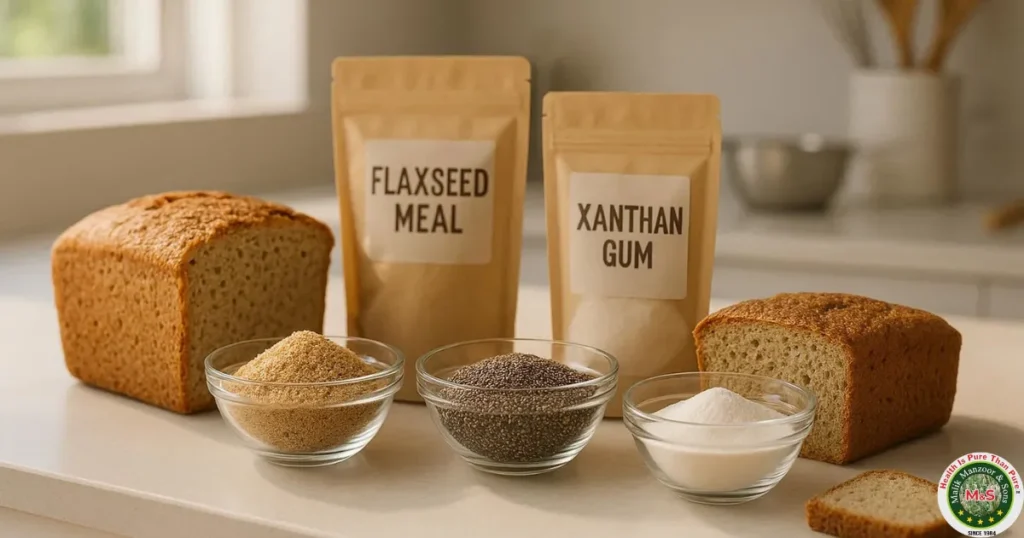
The Best Psyllium Advantage.
When you do use psyllium husk powder in your baking, quality matters significantly. Malik Psyllium, recognized as Pakistan’s leading psyllium brand with international acclaim, provides exceptionally pure, finely milled powder that performs consistently across all baking applications. As both growers and manufacturers, we control quality from seed to package, ensuring you receive premium psyllium husk powder that delivers reliable results every time.
Our psyllium husk powder undergoes rigorous testing and processing to achieve the optimal fineness and purity that bakers depend on for professional results. Whether you’re creating gluten-free bread, keto-friendly desserts, or traditional recipes with modern twists, starting with superior ingredients makes all the difference.
Troubleshooting Common Issues with Psyllium Husk Powder Substitute in Baking.
Dough Too Sticky.
Add flour gradually, one tablespoon at a time, mixing thoroughly between additions. Alternatively, refrigerate the dough for 30 minutes to firm up before handling.
Baked Goods Too Crumbly.
Increase the binding agent by 25% and ensure adequate resting time before baking. Consider adding an extra egg or 2 tablespoons of applesauce for moisture.
Dense, Heavy Texture.
Reduce the binding agent slightly and increase the leavening agents. Make sure you’re not overmixing, which deflates air bubbles necessary for a light texture.
Gummy or Slimy Mouthfeel.
You’ve used too much binding agent, particularly xanthan or guar gum. Reduce quantity by half next time and gradually increase only if needed.
Off-Flavors.
Ground flaxseed and chia can turn rancid quickly. Always store in refrigerator or freezer and smell before using. Replace if they smell paint-like or bitter.
Lifestyle Integration: Making Substitution Second Nature.
Successful gluten-free and alternative baking becomes intuitive with practice. Keep multiple Psyllium Husk Powder Substitute in Baking stocked in your pantry, allowing flexibility based on recipe requirements and availability. Create a personal reference chart noting which substitutes worked best in your favorite recipes, including any adjustments you made for optimal results.
Consider subscribing to online gluten-free baking communities where bakers share experiences with different substitutes. These forums provide invaluable real-world testing results and creative solutions to common challenges.
Experiment regularly with small test batches before committing to full recipes. This approach saves ingredients and prevents disappointment while building your understanding of how different binders perform in various contexts.
Storage and Shelf Life of Substitute Ingredients.
Proper storage extends the life and maintains the effectiveness of your binding agents:
- Xanthan Gum: Store in an airtight container in a cool, dry place. Shelf life: 2-3 years.
- Guar Gum: Similar to xanthan gum storage. Shelf life: 2 years.
- Ground Flaxseed: Refrigerate or freeze in an airtight container. Shelf life: 3-6 months refrigerated, 1 year frozen.
- Chia Seeds: Store in a cool, dark place in a sealed container. Shelf life: 2-4 years whole, 6-12 months ground.
- Gelatin: Store in a cool, dry place away from moisture. Shelf life: 3 years.
- Psyllium Husk Powder: Airtight container in a cool, dry location. Shelf life: 2-3 years.
Buy ground flaxseed in smaller quantities or purchase whole seeds and grind as needed for maximum freshness and nutritional benefit.
User Experiences: Real Bakers Share Their Substitute Success.
Sarah M., Home Baker: “I switched to ground flaxseed when I couldn’t find psyllium at my local store. My banana bread turned out even better – more moist with a lovely nutty undertone. Now I use flaxseed exclusively for quick breads.”
James L., Gluten-Free Pizza Enthusiast: “Xanthan gum transformed my pizza crust game. The stretch and chew factor finally matched what I remembered from wheat pizza. I use half the amount the recipe calls for psyllium and it’s perfect.”
Priya K., Keto Baker: “Combining xanthan gum with a tablespoon of ground chia gives me the best texture in keto bread. Neither works as well alone, but together they create amazing structure and moisture.”
Michael R., Professional Pastry Chef: “In my bakery, we use guar gum for our gluten-free line. It’s more cost-effective than xanthan for large-scale production and our customers don’t notice any difference in the final products.”
These real experiences demonstrate that successful substitution often involves personal preference and willingness to experiment until finding your ideal combination.
When to Use Psyllium vs. When to Substitute.
Certain recipes absolutely shine with authentic psyllium husk powder, while others work equally well or better with substitutes:
Prioritize Psyllium For:
- Artisan gluten-free bread requiring maximum rise and structure.
- Recipes specifically developed and tested with psyllium.
- When maximum fiber content is a dietary goal.
- Keto baking where net carbs must be minimized.
- Recipes requiring neutral flavor and clear color.
Substitutes Work Great For:
- Everyday baking when psyllium isn’t available.
- Budget-conscious baking projects.
- Adding nutritional variety to your diet.
- Recipes where flavor contributions are welcome.
- When experimenting with texture variations.
Understanding these nuances helps you make informed decisions that balance convenience, nutrition, cost, and desired results.
Can I use psyllium husk powder substitute in Baking in all gluten-free recipes?
Most gluten-free recipes adapt well to substitutes, though results vary by substitute choice. Xanthan gum works universally across nearly all applications, while flaxseed and chia seeds excel in quick breads, muffins, and denser baked goods. For delicate cakes or pastries requiring minimal interference with flavor and color, stick with xanthan or guar gum rather than seed-based options.
What’s the main difference between using whole psyllium husk and psyllium husk powder substitute in Baking?
Whole psyllium husk provides more visible fiber content and creates slightly different texture compared to powder. Substitutes like ground flaxseed mirror powder more closely than whole husk. If your recipe specifically calls for whole husk, grinding chia or flax seeds coarsely rather than to fine powder better approximates the texture. Check out our guide on whole psyllium husk vs powder for detailed comparisons.
Will my baked goods taste different with substitutes?
Xanthan gum, guar gum, and gelatin remain virtually flavorless in baked goods. Ground flaxseed adds mild nutty flavor that complements chocolate, nuts, and whole grain recipes but may be noticeable in vanilla or delicate fruit-based treats. Chia seeds taste milder than flaxseed but still contribute subtle earthiness. Choose your substitute based on whether its flavor profile enhances or detracts from your intended recipe.
How do I know if I’m using too much substitute?
Texture provides clear feedback. Excessive xanthan or guar gum creates slimy, gummy mouthfeel and overly dense crumb. Too much flaxseed or chia results in gritty texture and pronounced flavor. Start with recommended conversions and reduce by 25% if you notice these issues. Remember that binding agents are concentrated – less is often more.
Can I substitute psyllium husk powder in keto baking recipes?
Absolutely, though you’ll need to monitor net carbs carefully. Xanthan gum contains negligible carbs making it ideal for strict keto baking. Ground flaxseed and chia seeds add carbs but contribute healthy fats and fiber that align with keto principles. Learn more about psyllium husk powder benefits for weight management and metabolic health.
What happens if I completely omit psyllium without substituting anything?
Gluten-free baked goods without any binding agent typically turn out extremely crumbly, dry, and fragile. They fall apart easily and lack the cohesive structure that makes bread sliceable or cookies holdable. Always use some form of binder – the choice of which binder matters less than including one.
Are store-brand substitutes as effective as name brands?
Quality varies significantly between brands, particularly for xanthan and guar gums. Clumping, inconsistent particle size, and contamination issues plague lower-quality options. For reliable results, invest in reputable brands even if slightly more expensive. The difference in performance justifies the modest cost increase. For psyllium specifically, choosing quality suppliers like Malik Psyllium ensures consistent performance batch after batch.
Can I make my own psyllium husk powder substitute in Baking at home?
You can easily create ground flaxseed or chia seed “flour” at home using a coffee grinder or high-speed blender. Grind in small batches and store refrigerated. However, you can not make xanthan or guar gum at home – these require industrial fermentation and processing. Homemade seed-based substitutes work wonderfully and cost less than commercial options.
How does altitude affect substitute performance?
High altitude baking challenges all recipes, including those using psyllium substitutes. At elevations above 3,500 feet, you may need to increase binding agents by 10-15% and adjust liquid ratios. The thinner atmosphere causes faster evaporation, so substitutes that retain moisture (like flaxseed and chia) perform particularly well. Xanthan gum remains stable across altitude variations.
What’s the best substitute for psyllium in bread machine recipes?
Xanthan gum excels in bread machines because it maintains stability throughout the extended mixing and rising cycles. Use slightly less than recommended for hand-kneaded bread – about 1 teaspoon per cup of gluten-free flour. The vigorous mixing action of bread machines fully incorporates xanthan’s binding properties without requiring manual kneading.
Final Thoughts.
Finding the right psyllium husk powder substitute in baking opens up new possibilities while maintaining the structure and texture you love in gluten-free and specialty baking. Whether you choose xanthan gum for its powerful binding, ground flaxseed for nutritional benefits, chia seeds for versatility, guar gum for cold applications, or gelatin for protein-based structure, success comes from understanding how each alternative functions and adjusting recipes accordingly.
Remember that substitution is both science and art. Start with recommended ratios, observe results carefully, and adjust future batches based on your preferences and requirements. With practice, you’ll develop intuition about which substitute works best for each baking situation.
Ready to experience the difference that premium psyllium husk powder makes when you’re not substituting? Explore pure psyllium husk powder and discover why professional bakers worldwide trust our quality for consistent, superior results in every recipe.
Malik Shabbir
Featured Blogs
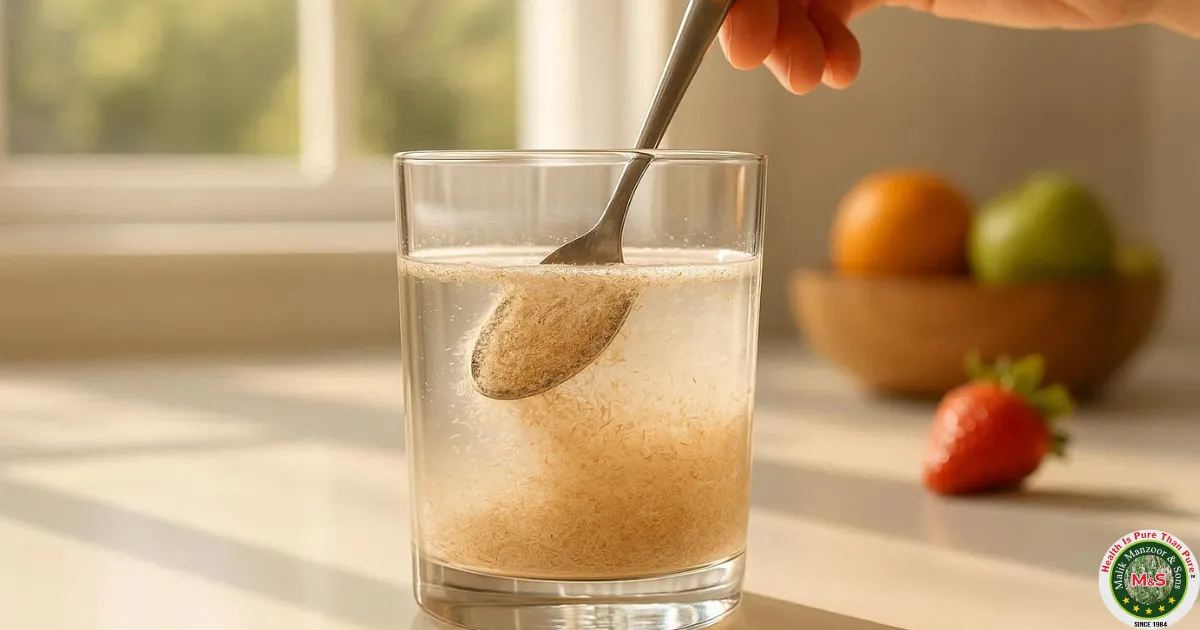
Isabgol Husk Powder for Constipation: Natural Relief Guide – 2025
Constipation disrupts daily life for millions of people worldwide, causing
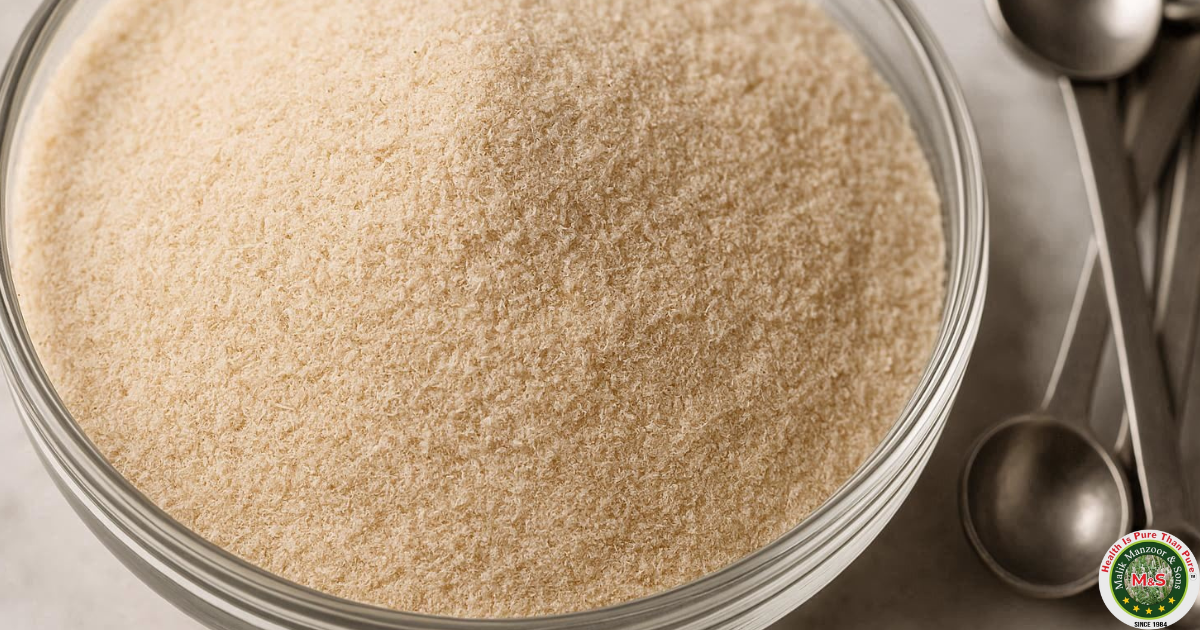
Psyllium Husk Powder Substitute in Baking: 5 Alternatives That Actually Work
Running out of psyllium husk powder mid-recipe can feel frustrating,
